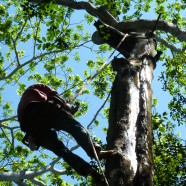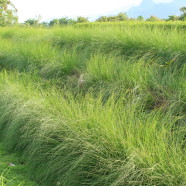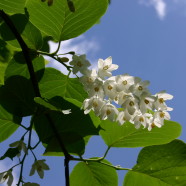Peru Balsam: Getting to the Source, El Salvador
This article addresses key themes surrounding this crucial natural material including: limited geography, creating value in local Peru Balsam production, extraction from the tree, processing, Peru Balsam as an active ingredient, uses in perfumery and flavoring, sourcing issues, historical volumes and prices, supply chain management and restriction on use.
Read MoreNOBS at IFEAT San Francisco 2013
The 2013 conference ‘Sustainable Growth’ will be take place at the world renowned Fairmont San Francisco Hotel, USA. The hotel represents an awe-inspiring picture of an historic city. The grandeur of the hotel, coupled with its reputation for impeccable service, promises to be a truly memorable experience. With a panoramic view of the City and San Francisco Bay from the top of Nob Hill, the Fairmont San Francisco hotel presents an unmatched blend of luxurious accommodation, elegant meeting spaces and superb services which will make for an unforgettable conference. Centrally located, this venue is a short cable car trip from the bustling downtown, financial district, Union Square and Fisherman’s Wharf and is the only place in San Francisco where each of the City’s cable car lines meet. The overall theme of this year’s Conference is ‘Sustainable Growth’. There will be presentations reviewing various aspects of: Essential oils and aroma chemical developments in the Americas Environmental, organic and sustainability issues Global market trends and technical developments in the F&F industries Updates on regulatory and legislative issues More Info:...
Read MorePeru Balsam Process
You first climb the tree in order to take the bark out with a knife. You burn the naked skin and this makes the tree exudate the balsam in order to cure itself, this is why we but a fabric to recuperate the balsam and get it back one month afterward. This fabric is then pressed in a artisanal...
Read MoreVetiver Essential Oil
Unchallenged in its ability to impart green woody notes, vetiver is a classic. Unchallenged in its ability to impart green woody notes, vetiver is a classic. It is a widely used note, particularly present in many iconic masculine perfumes. It is multi faceted and complex, while still retaining a cohesive identity. It imparts rooty and woody notes to a composition, containing a background of warm earth, soft honeyed touches and slight roasted coffee nuances. While possessing a formidable strength, it maintains a pleasantly soft and velvet texture which imparts both dry and humid effects. This vetiver is pure and direct, both powerful and diffusive while at the same time retaining a subtle elegance. It is extremely close to the actual vetiver root, but with a cleaner and more refined impact. Its texture is slightly drier and more transparent than the average offering. This leads to it being an extremely versatile note. It can be used in any work where a clear and woody character is desired. Its purity allows it to be used as either a reinforcing or as a dominant theme within a composition. Powerful, direct and elegant. It blends with citruses and floral notes with equal ease, having an exceptional affinity for rose. Its tenacity is nearly unmatched and it balances perfectly with grapefruit, lavender, jasmine and ylang-ylang. Extraction process Our Vetiver essential oil is distilled using a hydrodifussion still. The hydrodifusion still injects vapor at the top of the machine and condenses the vapor in the bottom. The vapor has pulled with it the essential oils contained within the Vetiver roots. This is later separated from the water using a Florentine flask, a traditional decanter used in perfumery to separate oil from water. Oil will separate from the water because oil and water do not mix. The distillation delicately continues for twenty-four hours in order to recover all of the essential oil and active ingredients that can be found within the Vetiver roots. Low temperatures and pressures are used in order to ensure a product that is as true to nature as possible. The Vetiver essential oil is then recovered from the Florentine flasks and left to age for six months in order for it to stabilize. This is what is then sold as a Vetiver essential oil produced through hydrodifusion. Download Technical Data Sheet Download Material Safety Data Sheet...
Read MoreStyrax Gum
The ambery balsamic gum. As a natural raw material, styrax can be used in a multiple number of applications. Even if it is an important ingredient in perfume compositions, it can also be used as an active ingredient in cosmetics and even in pharmaceutics. Topping of with a light styrene plastic note, it gives way to a soft cinnamic body with a balsamic character. Fruity and honey aromas are in the continuous gradations of its smell. It is considered under the amber family due to its leathery and animalic tones that are combined with an indulgent floral touch. Liquidambar styraciflua L, is a tree that is mainly present in the mountain region of the department of Olancho in Honduras. It is also present in important volumes in other regions of the country and even at some degree in the northern mountain ranges of El Salvador. The use of styrax gives aromatic blends a gourmand spicy tone that goes great in amber compositions. It can also be used as a fixative. It is considered as an important note in the chypre and oriental family, where it is often used. Due to its dry and smoky tonalities, it is used in bold leather compositions. You can apply styrax whenever a resinous balsamic note is called for due to its unmistakable incense like facets evocative of glue and cinnamon. It is a note that combines particularly well with woody scents. It also conglomerates well with other notes such as benzoin, vanilla, Peru balsam and cinnamon. Softens and enhances the bottom notes of floral compositions. Styrax has been historically used since before the time of the colony for medical preparations. Some of its active properties are: antiseptic, carminative, diuretic, expectorant, parasiticide, poultice, salve, sedative, stimulant, vulnerary, anti-‐inflammatory, anti-‐microbial and wound healing due to its aid in skin regeneration. It is also used in food aromas as a fixative. Styrax can similarly be engaged as a stabilizer in some pastry formulations. Extraction process Extraction from the tree start by making cuts around the stem of the trees. The length of each incision is of around 15 cm long with a depth of 3 to 4 cm. It is a diagonal cut of 45° since what the resin needs to accumulate in said cavity so that then you can collect it in a monthly fashion. What you obtain is then a mixture of resin, water, insects and vegetable residues. An artisanal purification takes place in the fields: The resin is heated on top of firewood in until the unwanted residues start to float. This is separated but the resin still has some water in it. Some of the exporters therefore continue evaporating the water or getting rid of it through other processes like centrifugation. Download Technical Data Sheet. Download Material Safety Data Sheet. Download Technical Data Sheet 2018 [ninja_form...
Read More




